Review Article
Year: 2020 |Volume: 1 | Issue: 4 |Pages: 142-150
Role of Santulit Ahara (Balanced diet) As Preventive Medicine in Mahasrotas
About Author
Correspondence Address:
Dr.Vidya Bhaskarrao Dole Flat no. 7,Vandana apartment, New Bhagwat plot, Akola-444005 Mobile no. -7083434569 / 8830018173 E mail- drvidyadole@gmail.com
Date of Acceptance: 2020-07-10
Date of Publication:2020-08-01
Article-ID:IJIM_20_08_20 http://ijim.co.in
Source of Support: Nil
Conflict of Interest: Nil
How To Cite This Article: Dole Vidya, et al. Role of Santulit Ahara (Balanced diet) As Preventive Medicine in Mahasrotas. Int. J Ind. Med. 2020;1(4):142-150.
Abstract
Acharya Charka has explained the Moolsthana of Mahasrotas as the long channel present from Mukha to Guda i.e. alimentary canal along with the allied organs and Hridayam. Poshaktatva (Nutrients) from Santulit Ahara (balanced diet) absorbed from Mahasrotas (GIT) is the main cause of digestive health and does play major role in maintaining the life of a person. No medicine is equivalent to Ahara. As Ahara is one among the three pillars supporting to life. According to Ayurveda all the causes of Mahasrotas dushti are related to Aahara. Now a day’s just because of consumption of Asantulit Ahara (imbalanced diet) increase in diseases of Mahasrotas occur. In this present study we can see how Aahara plays an important role as preventive medicine in Mahasrotas.
Keywords: Srotas, Moolsthana, Mahasrotas, Santulit Ahara, Balanced diet, Preventive medicine.
Introduction
Ayurved Sharir explained the unique concept of "Srotas" which means the channels present in the body which are helpful in the production and conduction of body constituents from one place to another place in the body. Mahasrotas is one among the important Srotas starting from the oral cavity (Mukha) to anal opening (Guda). Mahasrotas is the main digestive path in the middle of the body. The balanced and imbalanced food articles are responsible for the digestive health and their diseases respectively. (1) Hence, balanced diet is necessary for good digestive health and prevention of diseases. Hence, this current survey study is carried out to observe the role of Santulit Ahara as preventive medicine in Mahasrotas.
AIM AND OBJECTIVE –
To study role of Santulit Ahara as preventive medicine in Mahasrotas.
Objectives -
1. To study the literature about Mahasrotas.
2. To define the concept of Santulit Ahara.
3. To study the literature about role of Santulit Ahara as preventive medicine in Mahasrotas.
4. To study the above project by survey.
OBSERVATIONS
1. To study the literature about Mahasrotas –
Srotas are meant for carrying the (moving) dhatus from one place to another and are not for stable ones. (2) Acharya Charka has described the Moolsthana of Mahasrotas as the long channel present from mouth cavity (Mukha) to anal opening (Guda) i.e. alimentary canal along with the allied organs. (3) Koshtha (belly) is the common synonym of Mahasrotas in the middle of the body, contains oral cavity above and then going downwards to Amashaya (stomach) and lastly Pakavashaya (large intestine). (4)
Mahasrotas is also known as Antah Rog Marg because it acts as an excretory organ for expelling out various vitiated dosha which have afflicted the periphery and middle of the body. (5)
Food carrying channels are two with their roots being Amashaya and food carrying dhamani. Its origin in Amashaya. The symptoms of its affection are Annabhilasha (loss of appetite), Arochaka (anorexia), Avipak (indigestion) and Chardi (vomiting), etc. All the causes of its affection are related to ahara. (6)
2. To define the concept of Santulit Ahara –
Ahara is one among the three pillars supporting life. (7) Ahara has been given the prime importance since Vedic period. It is considered as a Brahma in Upanishad. (8) Acharya Charka has explained about Santulit Ahara is the food articles in such a quantities and proportion’s that which maintain the equilibrium of bodily Dhatus and help in the eliminating the disturbance of their equilibrium, by preventing it from diseases. (9) The balanced and imbalanced food article s are responsible for digestive health, maintains of healthy state of life and their diseases respectively. Acharya Kashyap gives ahara the name “Mahabhaisajya” and “Prandharana” as no medicine is equivalent to Ahara. (10) Diet is medicine but medicine is not diet. It is possible to make a person disease free with just a balanced diet. Ahara determines the origin of human being and form the chief source of their bodily elements as well as the aluminous (ojas) principle of their organism. (11) Food is the source of growth, strength and healthful glow of organic beings. It is the irregularity (vaishamya) of diet which brings the ill-health. According to Acharya Sushruta Diet is classified into four types – solid food (Ashita), liquids (Peeta), food taken by licking (Ledham) and food that chewed (Khadita). (12)
According to modern science balanced diet is defined as one which contains a variety of food in such a quantities and proportions that the need for maintain health, viability and general wellbeing and also makes to withstand short duration of leanness. (13) A balanced diet contains food items like cereals, pulses, leafy vegetables, milk, oil and fats. (14)
Proteins – In the nutritional diet proteins have greatest value. One fifth of the body weight of an individual is constituted by proteins. Proteins are complex organic homogenous compounds that contain nitrogen and thus they differ from carbohydrates and fats. Proteins should be included about 16 % of our daily diet. Proteins are built of amino acids. Human body requires 22 amino acids. Out of these 8 are called ‘essential’ because the body cannot synthesise them in sufficient quantity. These must be obtained from the resources we consume.
Proteins are needed by the body for body building, repair and maintenance of body tissue, maintenance of osmatic pressure and synthesis of certain substances like antibodies, plasma proteins, haemoglobin, enzymes, hormones and coagulation factors. Proteins are connected with the immune mechanism of the body.
Humans obtain protein from two main dietary sources(a) animal sources: Milk, meat, eggs, cheese, fish and fowl. (b)Vegetable sources: Pulses, cereals, beans, oil-seed cakes, etc.
Fats – Fats are solid at 20 deg.C, they are called as ‘oils’ if they are liquids at that temperature. Fats and oils are sources of energy. Fatty acids are divided into saturated fatty acids such as lauric, palmitic and stearic acids, and unsaturated fatty acids which are further divided into monounsaturated (MUFA) (e.g. Oleic acid) and poly-unsaturated fatty acids (PUFA) (e.g., linoleic acid and alpha- linoleic acid) mostly found in vegetable oil. Fats in the body supports viscera such as heart, kidney and intestine, and fat beneath the skin provides insulation against cold.
Carbohydrates - Major component of food and main source of energy, providing 4 kcal per gram. Carbohydrates are also essential for the oxidation of fats and for the synthesis of certain non-essential amino acids. There are three main sources of carbohydrates, viz., starches, sugar and cellulose. Starch is the basic to the human diet. It is found in abundance in cereals, roots and tubers. Free sugars along with starches constitute a key source of energy. Cellulose which is the indigestible component of carbohydrate with scarcely any nutritive value, contributes to dietary fibre.
According to Ayurveda Santulit Ahara (Balanced diet) consists-
Cereals-
Shali (rice) – It is cooling in potency, light in digestion and imparts strength. It is a good disinfectant and anti-toxic. Wheat –Tonic, rejuvicient, and improves the relish for food.
Pulses-
Kudhanya – Pungent in digestion, purify and invigorate the organ of vision. Kulattha proves curative in cases of Anaha, obesity, piles, hic-cough and dyspnoea. Tilam acts as a curative as a plaster for ulcers. Beneficial to the skin, teeth, improves the intellect and digestion, helps the growth.
Vegetable – Proves curative in cases of Anaha and Ashthila. Improves digestion, laxative and proves curative in many diseases.
Roots and tubers – Vidari-kanda acts as constructive tonic, Shatavari kanda as appetising and proves curative in cases of Grahani (mesenteric diarrhea) and piles.
3. To study literature about the role of Santulit Ahara as preventive medicine in Mahasrotas –
As per above explained importance of Santulit Ahara, Aahara may be defined as the kind of food on which a person or group lives and life is impossible without Ahara. By definition, preventive medicine is applied to “healthy” people. Its primary objective is prevention of disease and promotion of health. (15) By definition of Balanced diet contains variety of food in proper quantities and proportion and according to Ayurveda Matra (quantity) of diet is that which does not harm the quantity can’t be the same for all persons because the strength of digestive fire varies in each individual. (16) As Mahasrotas contains Grahani which is the place of Pachaka Pitta. The Pachakagni digests food. Good digestion depends on Agni (digestive fire). It means consumption of imbalanced diet leads to Agnimandya (weak digestion). Hence it is necessary to consume balanced diet for good digestion. According to Ayureveda all the causes of Mahasrotas dushti are related to Aahara. Now a day’s just because of consumption of Asantulit Aahara (imbalanced diet) people are suffering from many GIT related diseases. Apart from taking long term treatment for these diseases it is difficult to cure perfectly. Hence it is necessary to prevent our body from these diseases by consumption of Santulit Ahara.
Material and Methods –
For survey study of role of Santulit Ahara as preventive medicine in Mahasrotas we prepared a questionnaire.
Methodology –
I. Study design: - Type of study design – Survey study.
II. Study setting: - At our Hospital and institute.
III. Study duration: - 30 days
IV. Sample size: - 30 Subjects.
V. Sampling technique: - Random study.
VI. Methods of selection of study subjects: -
a. Inclusion criteria:
1. Age group between 20-30 years irrespective to gender.
2. Subject having regular dietary habit.
b. Exclusion criteria:
1.Subjects having age below 20 and above 30 years.
2.Subjects having irregular dietary habit.
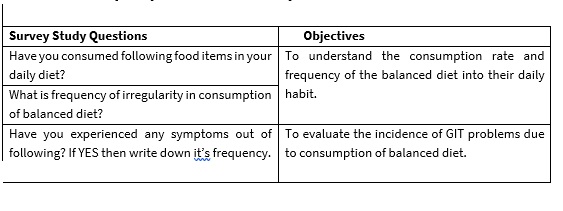
Table 1.- Role of Santulit Ahara as preventive medicine in Mahasrotas Questionnaire –
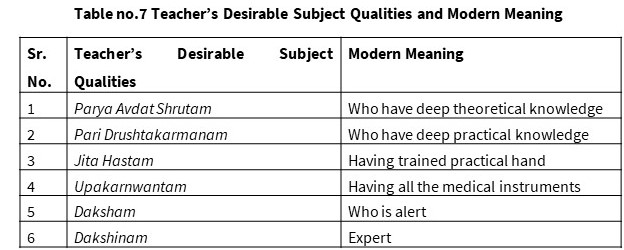
Table 2. - The survey study questions and their objectives.
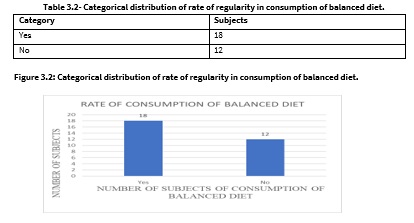
Table 3.1 – Categorical distribution of sample chosen.
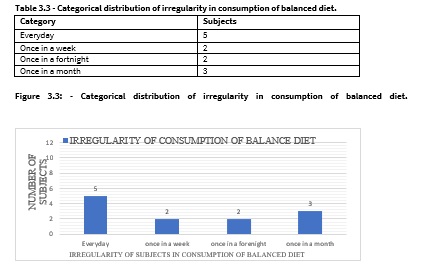
Table 3.2- Categorical distribution of rate of regularity in consumption of balanced diet.
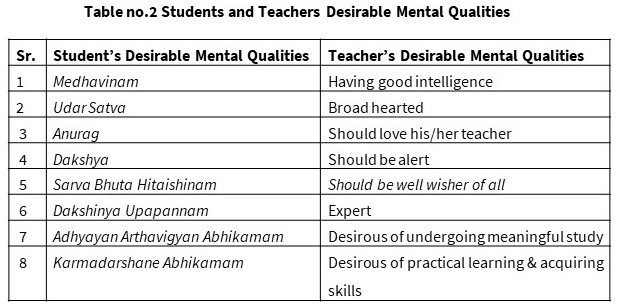
Table 3.3 - Categorical distribution of irregularity in consumption of balanced diet.
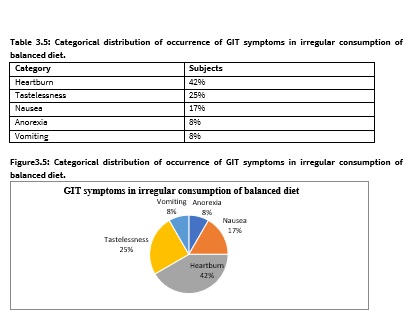
Table 3.4: Categorical distribution of occurrence of GIT symptoms in consumption of balanced diet.
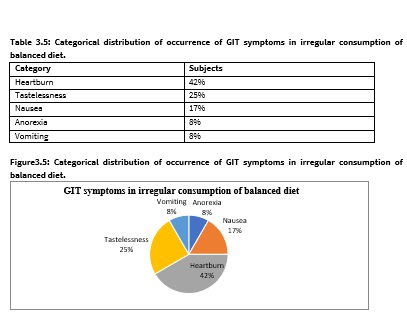
Table 3.5: Categorical distribution of occurrence of GIT symptoms in irregular consumption of balanced diet.
Discussion
Since ancient time Ahara is known as Brahma. Santulit Ahara is which maintain equilibrium of bodily dhatus, circulates through Mahasrotas and help in eliminating the disturbance of their equilibrium, by preventing diseases. This survey reveals that total of 30 subjects participated in the study. Among them 46.66% male and 53.33% females. Out of that 60% participants were regular and 40% were irregular balanced diet consumers. The majority participants were regular balanced diet consumers. Santulit ahara (balanced diet) is responsible for good digestive health. It is the chief source of bodily elements as well as the aluminous (ojas) principle of their organism. But irregularity in consumption of Santulit ahara (balanced diet) brings ill health. Now a days due to the changed busy lifestyle there is increase in irregularity in consumption of balanced diet and also increase in intake of imbalanced diet which are the main cause of many digestive related diseases.
The study highlights that regular balanced diet consumers have less occurrence of Mahasrotas (GIT) related symptoms. The study shows that most of the participants were irregular every day, whereas the least percentage of participants eat once a fortnight. Among irregular balanced diet consumers there is more occurrence of Mahasrotas (GIT) related symptoms. With the help of the study it is observed that subjects consuming Santulit Aahara have fewer occurrences of diseases of Mahasrotas.
Conclusion
Santulit Aahara is most dominant cause for good digestive health. In above survey study it is cleared that consumption of irregular balanced diet is reason behind Mahasrotas (GIT) related diseases. Santulit Aahara plays an important role as preventive medicine in Mahasrotas. So, it is possible to make a person disease free with just a Santulit Aahara.
Acknowledgement –
With the grace of God Dhanvantary, I am happy to present my article. I am thankful to my guide Professor Vd S. M. Kandekar sir HOD Rachana Sharir Department for guiding me throughout this study.
My sincere thanks to Vd. Y. N. Deshpande sir Assit. Professor Rachana Sharir Department. I owe my heartiest thankfulness to my colleague, Dr. Pooja Kohar for valuable co-operation.
References
value="
- Dr. Ravidutta Tripathi, Caraka Samhita, Vol.1, Reprint, Varanasi, Chaukhamba Sanskrit Pratishthan, 2010, Sutrasthana25/33, pg.no.334
- Dr. P.V. Sharma, Caraka Samhita, English Translation, Chaukhamba Orientalia, Varanasi, 1995 Edition, Vimansthana5/5, pg.no.326.
- Dr. Ravidutta Tripathi, Caraka Samhita, Vol.1, Reprint, Varanasi, Chaukhamba Sanskrit Pratishthan, 2010, Vimansthana5/3, pg.no.588.
- Prof. Suresh Chandra and Prof. Dinkar Govind Thatte, Chaukhamba Sanskrit Series Office, Varanasi, Chapter no.5, pg. no. 97.
- Dr. Ravidutta Tripathi, Caraka Samhita, Vol.1, Reprint, Varanasi, Chaukhamba Sanskrit Pratishthan, 2010, Sutrasthana11/48, pg. no. 177.
- Dr. Ravidutta Tripathi, Caraka Samhita, Vol.1, Reprint, Varanasi, Chaukhamba Sanskrit Pratishthan, 2010, Vimansthana5/3, pg. no. 588.
- Dr. Ravidutta Tripathi, Caraka Samhita, Vol.1, Reprint, Varanasi, Chaukhamba Sanskrit Pratishthan, 2010, Sutrasthana 11/35, pg. no. 171
- Dr. Mangala Gauri Rao, Swasthvrutta text book, Chaukhamba Orientalia, Chapter no. 8, pg. no. 78.
- Dr. Ravidutta Tripathi, Caraka Samhita, Vol.1, Reprint, Varanasi, Chaukhamba Sanskrit Pratishthan, 2010, Sutrasthana 5/13, pg. no. 86.
- Shri. Satyapala Bhisagacharya, Kasyap Samhita, Chaukhamba Sanakrit Sansthan, Varanasi, Khilsthana 4/6, pg. no. 249.
- Dr. Ambikadutta Shastri, Sushrut Samhita, Vol.1, Reprint, Varanasi, Chaukhamba Sanakrit Sansthan, 2017, Sutrsthana 46/3, pg. no. 241.
- Dr. Ambikadutta Shastri, Sushrut Samhita, Vol.1, Reprint, Varanasi, Chaukhamba Sanakrit Sansthan, 2017, Sutrsthana 46/3, pg. no. 241.
- Preventive and Social Medicine textbook, K. Park.19th Edition, M/S Banarasidas Bhanot Publishers, Chapter No.10, pg. no. 505.
- Preventive and Social Medicine textbook, K. Park.19th Edition, M/S Banarasidas Bhanot Publishers, Chapter No.10, Nutrition and Health, Annexure 2, pg. no. 529.
- Preventive and Social Medicine textbook, K. Park.19th Edition, M/S Banarasidas Bhanot Publishers, Chapter No.1, pg. no. 6.
- Dr. P. V. Sharma, Caraka Samhita, English Translation, Chaukhamba Orientalia, Varanasi, 1995 Edition, Sutrasthana 5/2, pg. no. 70.
"

